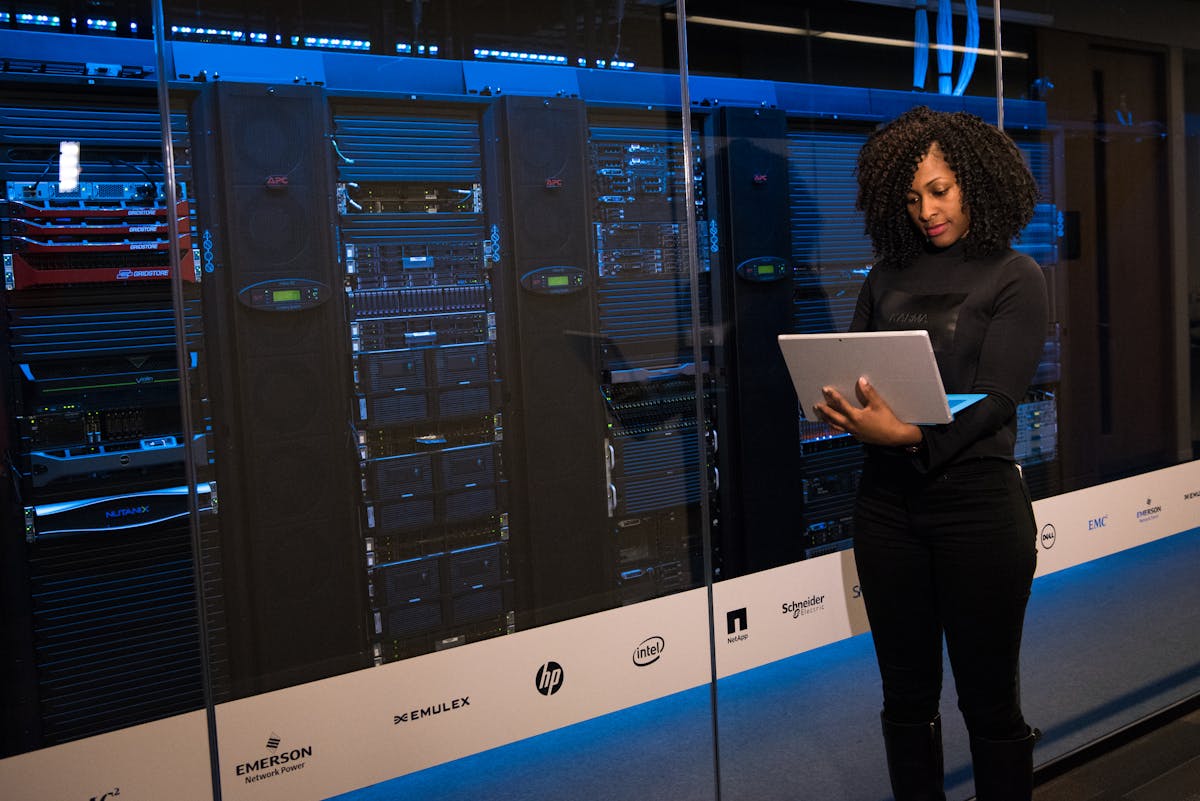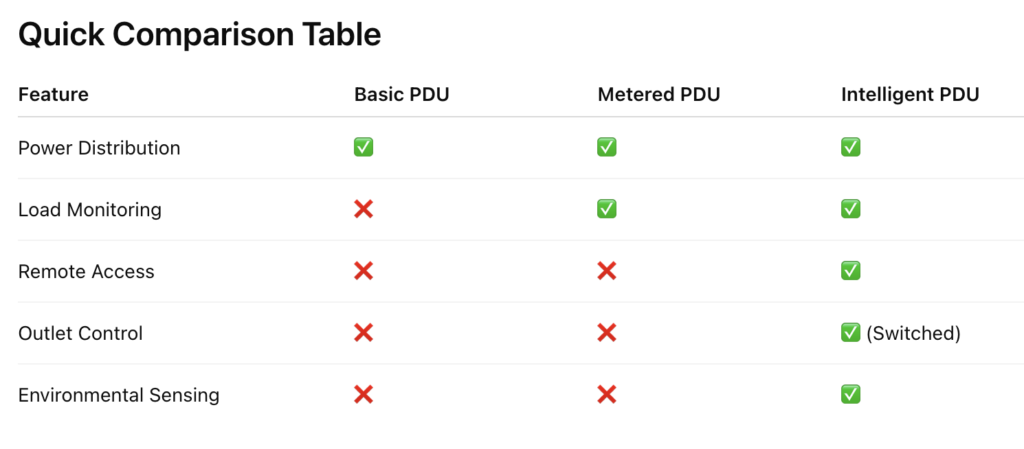
Power Distribution Units (PDUs) are one of the most important parts of the data center and other elements of IT infrastructure in the digital-first world. They make sure that servers, network devices, and storage systems are connected to clean and reliable power. Not every PDU is equal. The PDUs available are three types of PDUs namely Basic, Metered, and Intelligent (Smart) PDUs, depending on the needs of your facility.
Let’s break down each type to help you choose the right one for your setup.
1. Basic PDU
Overview:
The simplest and cheapest one is a basic PDU. It is somewhat of a fancy power strip which feeds power, in a UPS (Uninterruptible Power Supply) power or utility power line, to many connected devices.
Key Features:
No monitoring or remote access
Simple plug-and-play operation
Ideal for small server rooms or edge applications
Use Case:
Ideal in environments that do not need the monitor or are likely to change the power requirements, like a lab or a branch office.
2. Metered PDU
Overview:
A metered PDU, on the other hand, comes with real-time power monitoring capabilities, usually in the form of an LED screen or digital display. It enables data center managers to view load capacity and overload prevention.
Key Features:
Local current and voltage monitoring
Helps with load balancing and capacity planning
No individual outlet control
Use Case:
Suitable in places where you need to keep track of power usage, but do not need any remote control or information at the outlet level. It assists in maximising load sharing throughout racks.
3. Intelligent (Smart) PDU
Overview:
The most advanced form is referred to as an Intelligent PDU (also called Smart PDU or Switched PDU). It provides remote monitoring as well as control abilities. There are variants that enable outlet-level switching, which enables admins to power-cycle devices remotely.
Key Features:
Network connectivity (Ethernet, SNMP, Web UI)
Remote outlet control and monitoring
Environmental sensor integration (temperature, humidity)
Outlet-level energy tracking and alerting
Use Case:
It is also great where mission-critical data centers are needed that require continuous monitoring, proactive maintenance, and remote control. Vital to downtime minimization and better energy use.

Conclusion
The type of PDU to use is dependent on your business requirements, budget, and complexity of infrastructure.
Go with Basic PDUs for simple setups.
Use metered PDUs if you need load visibility.
Opt for Intelligent PDUs for full control and insight into your power environment.
The development of data centers would also increase the need to manage power more intelligently, so intelligent PDUs would represent a future-proof investment.
Not sure which PDU fits in your scheme? Send us the details of the rack and power requirements, and we will lead you to the right solution.





